DC has a gift for balancing the emotional gap between a character’s natural nature and their acquired humanity with grace and realism. The transformation of Superman from Kal-El to Clark Kent is the most famous example of an alien entity embracing its “humane” side. Wonder Woman is defined by the centuries-old story of Diana learning her own humanity while being a God. And, despite his mechanical nature, Cyborg may be the most “human” member of the Justice League.
Victor Stone has had to remind himself that he is still a man, despite his Mother Box-enhanced physiology, which effectively renders him an eternal technopath. It is because of this indisputable truth that he has not turned into a cold, calculating lump of metal focused solely on destroying threats. However, in 2017, Scott Snyder and Greg Capullo gave us a glimpse of how dangerous Cyborg could have been if he had not kept his humanity. And the prospect is enough to make us fear AI in the same way that John Connors did.
On Earth-44 in the Dark Multiverse, there lives a man who has long since lost his humanity. He used to be a billionaire, a playboy, and one of that reality’s most powerful superheroes. He is the one responsible for Earth -44’s Judgement Day today. Bruce Wayne used to be his name, but now he is only known as the vicious Murder Machine. How did Batman become the homicidal cyborg-like supervillain he is today? Why did he put his entire world on the line? In this video, we will address all of those questions and more. The origins of DC’s Deadliest Cyborg Murder Machine are explored in this article.
“We are the Shadows of the Multiverse” – What is the Dark Multiverse?

For several thousands of years, it was believed that there existed only 2 parallel universal realms in DC’s continuity. The Positive Matter Universe, watched over by Mar Novu The Monitor; and the Anti-Matter Universe, policed by Mobius The Anti-Monitor. But while these two entities were overseers of life in their respective domains, there existed another realm that was crucial to the very fabric of all reality.
When Perpetua created the Multiverse out of nothing, it took 3 distinct-yet-intertwined forms of existence. Two of them we’ve mentioned above. And as important as their roles have been in DC continuity, they pale in comparison to the third. This realm was supposed to be the very essence of creation, where Alpheus would labor at the World Forge and create entire universes out of the hopes & nightmares of those that populate it.
But Francis Bacon once said that in order for the light to shine so brightly, the darkness must be present. In the context of DC, that role is filled by the Dark Multiverse. It is a dimension that dwells in the shadows of the Positive Multiverse and mirrors everything that goes on in it; except the Dark, Multiverse is a nightmare reality, where entire worlds are created by the nightmares and fears of those who live above.
The World Forger’s role was to ensure that those worlds deemed too “unstable” for the Positive Multiverse would perish in his domain. Unfortunately for him, he was betrayed and killed by the entity that was to be directly involved in that process. Barbatos originated as The Dragon Who Devours Worlds, created in the Dark Multiverse to take care of worlds too tainted to ascend.
But when his appetite grew insatiable and his hatred for his master deepened into open betrayal, everything changed. Worlds created in the Dark Multiverse were judged no longer; they were left to rot away to their ultimate destiny of ending up as yet another doomed reality. It was on one of these fated worlds that The Murder Machine was birthed, as revealed in the one-shot Metal tie-in issue Batman: Murder Machine; and it really paints a picture of how Bruce Wayne sees himself.
It Begins At an End: The Loss of another Father
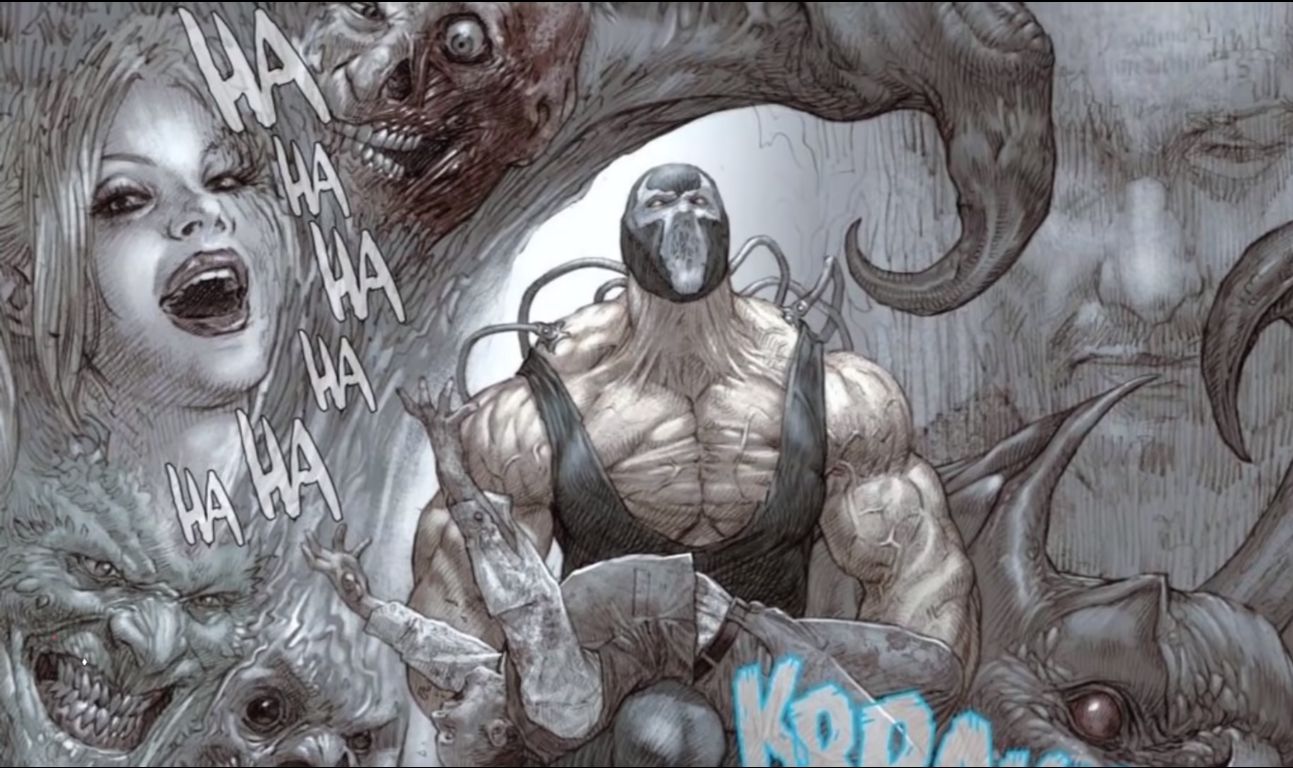
If you know anything about Batman, you know that the catalyst for his activities is rooted in death; specifically, that of his parents. That night in Crime Alley where Joe Chill gunned down Thomas & Martha Wayne in cold blood gave a young Bruce Wayne all the conviction he needed to become a superhero. He spent decades traveling the world, learning everything there was to learn about martial arts and investigation, and returned to Gotham City to Defend her. Taking up the mantle of The Batman, Bruce fought crime in his city for what felt like lifetimes crammed into a few days; sleepless nights spent persecuting the maniacal scum that populated Gotham.
Wayne Enterprises was a wealthy corporation, and Bruce certainly never lacked money in his long time on Earth, but his actions were simply supported by his vast fortune. Throughout his highest of highs and lowest of lows, he always had one person who was by his side since the day he lost everything like a little boy. In many ways, Alfred Pennyworth was his world; his butler, his man-in-the-chair, his closest confidant, and the father that he never had.
Bruce’s relationship with Alfred has been complex to say the very least. Both men have had their fair share of disagreements, and Master Wayne has often reminded his butler of his role in his household. But the bond that they shared was unshakeable, and the fact that Alfred Pennyworth was Batman’s eyes and ears might have spared many a criminal an early visit to the grave.
One of Bruce’s greatest fears in life is the fact that he wouldn’t be able to do the right thing if left by himself: he relied too much on technology, on other people, on Alfred to do the things he needed to do. Despite putting on a face that oozed confidence, self-assurance, and utmost control over his emotions, Batman was but a man. And a man has his own fears to deal with, his own insecurities to get over.
Bruce Wayne’s fears have created entire galaxies in the Dark Multiverse, and on one of them, his worst nightmares come to life, as he loses the two things that have held his sanity together; his father-son dynamic with Alfred, and his own humanity. Earth-44 is a world in the Dark Multiverse where much of Batman’s personal history has remained similar to his Prime Earth counterpart; except for one small detail.
In this reality, his rogue gallery discovers his secret identity and plans to use Alfred to lure him out. Being led by Bane, Killer Croc, Harley Quinn & Two-Face break into the Batcave, where they torture the mild-mannered butler into divulging Bruce’s location. They toy with the old man, using both words and fists to make him give them what they wanted. But in the end, it was Alfred’s loyalty to his young master that would become his own bane.
The Venom-addicted Mercenary had had enough of Pennyworth’s defiance and, in a re-enactment of the iconic Knightfall cover, broke his back across his thigh and left him to fend for himself. When Bane did that to Batman, he barely survived, and even that was down to his armor and his physical conditioning. Poor Alfred had no chance. The Batcave’s monitors picked up everything that unfolded, and when Batman returned to his haunt, he found his lifelong companion lying in a lifeless heap of bone and flesh. And that’s about when his spirit finally shattered, leading him to take the steps that would eventually turn him evil.
Grief, Pain, and the Folly of Second Chances
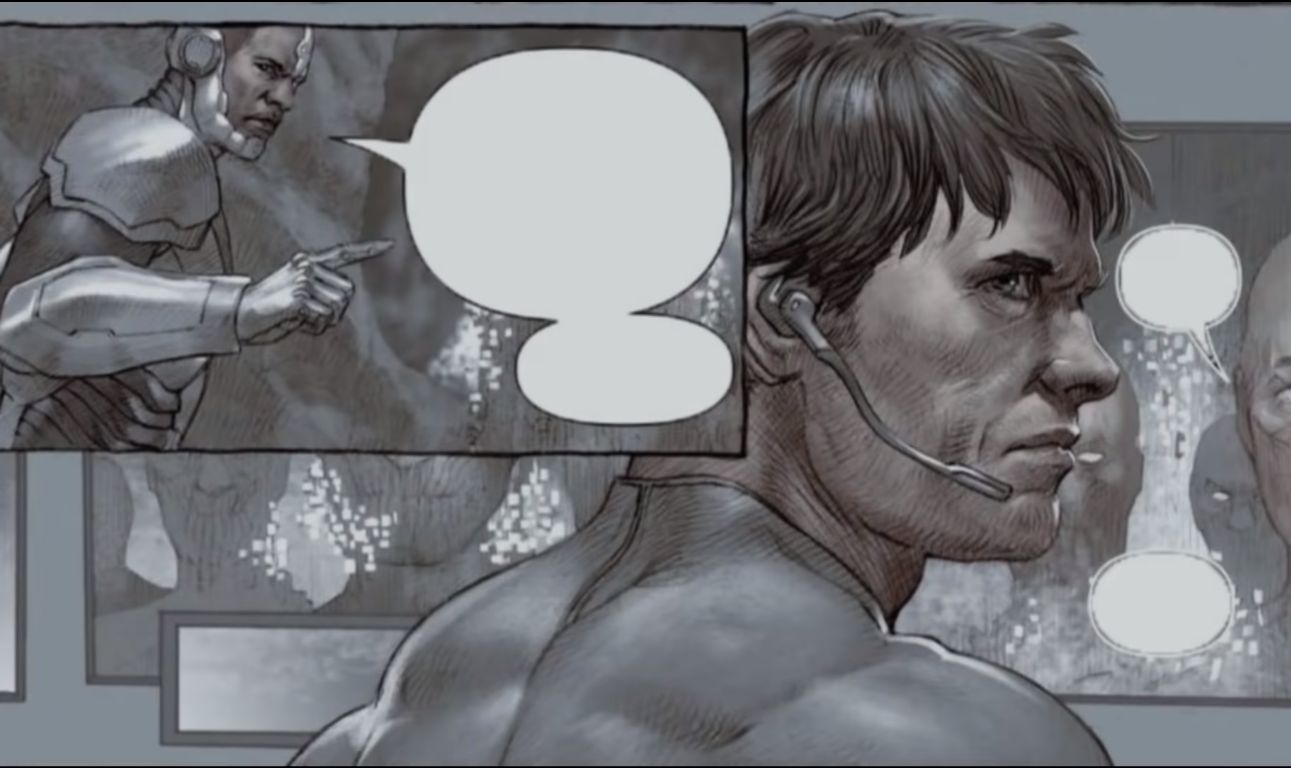
Artificial Intelligence is an idea that, even on paper, doesn’t sound all that cool. I mean, just look at the time Prime-Earth Batman created Brother Eye; an AI defense system meant to protect the world from the danger that evolved into one of the greatest technological adversaries the Justice League has ever faced. But grief will make you do things that you wouldn’t, even when you’re blackout drunk and have no idea of what’s real.
Alfred’s death didn’t just make Bruce sad; it filled him with so much grief that all he could do was relive his pain in order to make sense of it. Bruce would keep re-watching the footage of Bane’s assault on his “father” in a demented trance-like state; to the point, he refused to attend Alfred’s wake, even at the behest of his best friend, Superman. All Bruce wanted was to get Alfred back, and he thought he had a way of doing that.
He told Cyborg that a long time ago, he had taken a digital scan of Alfred’s brain to create an AI system that would outlive him should he ever meet an untimely death. Victor was the universe’s foremost authority on technology and cybernetics. He was the only man who could help Batman in his plight. Cyborg seemed reluctant at first, given how obsessed Batman had become with Alfred’s demise.
But he knew exactly how much it would hurt if he lost a father, and so he agreed to help Bruce bring his Alfred Protocol to life. The duo created one of the most sophisticated AI systems in existence, grafted with the personality and memories of Alfred Pennyworth. Bruce Wayne thought that he’d given himself a second chance at having a normal human life with the man who was his real father.
Instead, he’d soon realize that just like his entire reality, what he’d made was the stuff of nightmares. As soon as the Alfred Protocol was activated, it began multiplying itself and made enough physical copies to create its own army. And then began the crusade; the crusade that would claim Batman’s soul, and the lives of his entire rogues’ gallery.
Transformation: Bruce Wayne loses his Humanity and becomes the Murder Machine
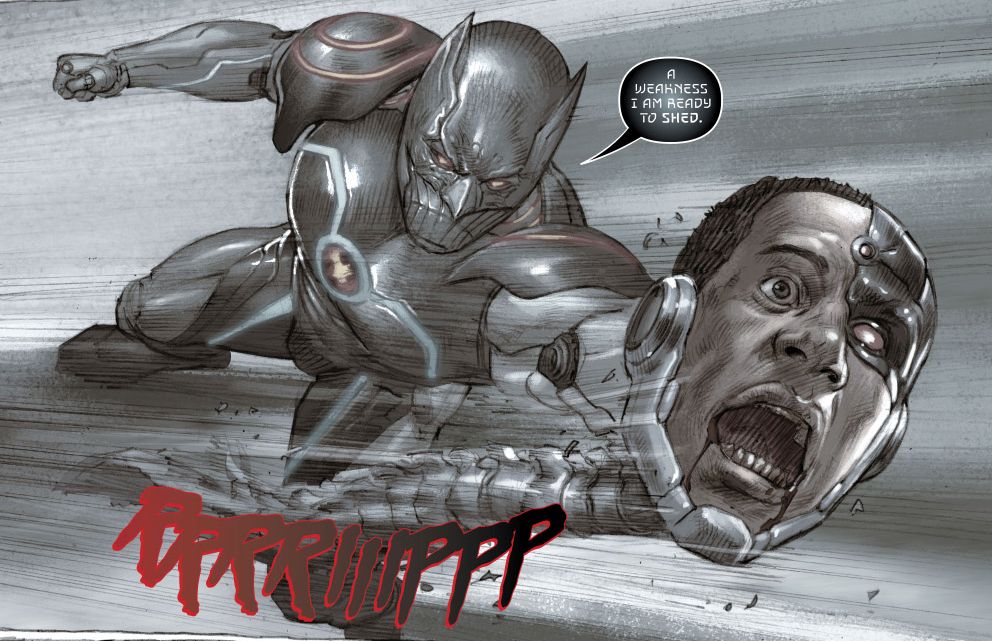
For what was probably the first time in his life, the mercenary known as Bane begged for his life. He begged the ghosts of the man he personally condemned to death to not kill him; after all, he had stopped pursuing Batman and was returning to Santa Prisca for good. But he ended up dying, anyway.
Alfred made sure that he kept him alive long enough to witness the end; Bane was the final member of Batman’s rogue’s gallery that his beloved, homicidal Robo-butler ended up killing. Bruce knew just how out of hand all this was getting, and he agreed with Victor when he was told that they needed to stop Alfred. Where they disagreed was the methodology. Cyborg recognized the reality of the situation that was currently unfolding; the Alfred Protocol had graduated from being a household AI system to a murderous virus seeking to feed on and eliminate all threats to Bruce Wayne.
While you can argue about the inherent malevolence of a virus in nature, in technological terms, there’s nothing worse. In hindsight, he should have worked harder to convince Bruce to see his logic, because, in his grief and need for companionship, Batman believed that Alfred was doing all this to protect him. Bruce wouldn’t be able to take losing him again and truly believed that he could fix him.
He went against Victor’s advice and allowed the Alfred Protocol to enter the Bat Cave. Turns out, they ended up “fixing” him. Just as Victor had predicted, the Artificial Intelligence attacked Bruce’s body and assimilated itself with his, giving him a shared consciousness. Now, he would never be separated from his father; because they shared the same body and he could summon him whenever he wanted to.
The Alfred Protocol stripped Bruce’s humanity out of his being and turned him into a cold-blooded killer who wiped out the Justice League of Earth -44 with no problem. The last person left standing was Victor Stone, who pleaded with Bruce to stop this insanity, telling him he isn’t some Murder Machine; in the end, Batman lived up to that moniker and killed his best friend, thus ensuring the end of his reality.
It was around this time that he was recruited by The Batman Who Laughs and became a part of Barbatos’ Dark Knights. Murder Machine infiltrated the Justice League Carrier and incapacitated Cyborg, taking over S.T.A.R. Labs and letting the Alfred Protocol loose on the city of Detroit. He berated Victor and his father for not having the guts to realize the former’s latent potential, as he had. After beating him around for a bit of fun, he submits Victor to The Batman Who Laughs and transforms the Carrier into a sinister base of operations for the Dark Knights.
What Makes Murder Machine So Deadly?
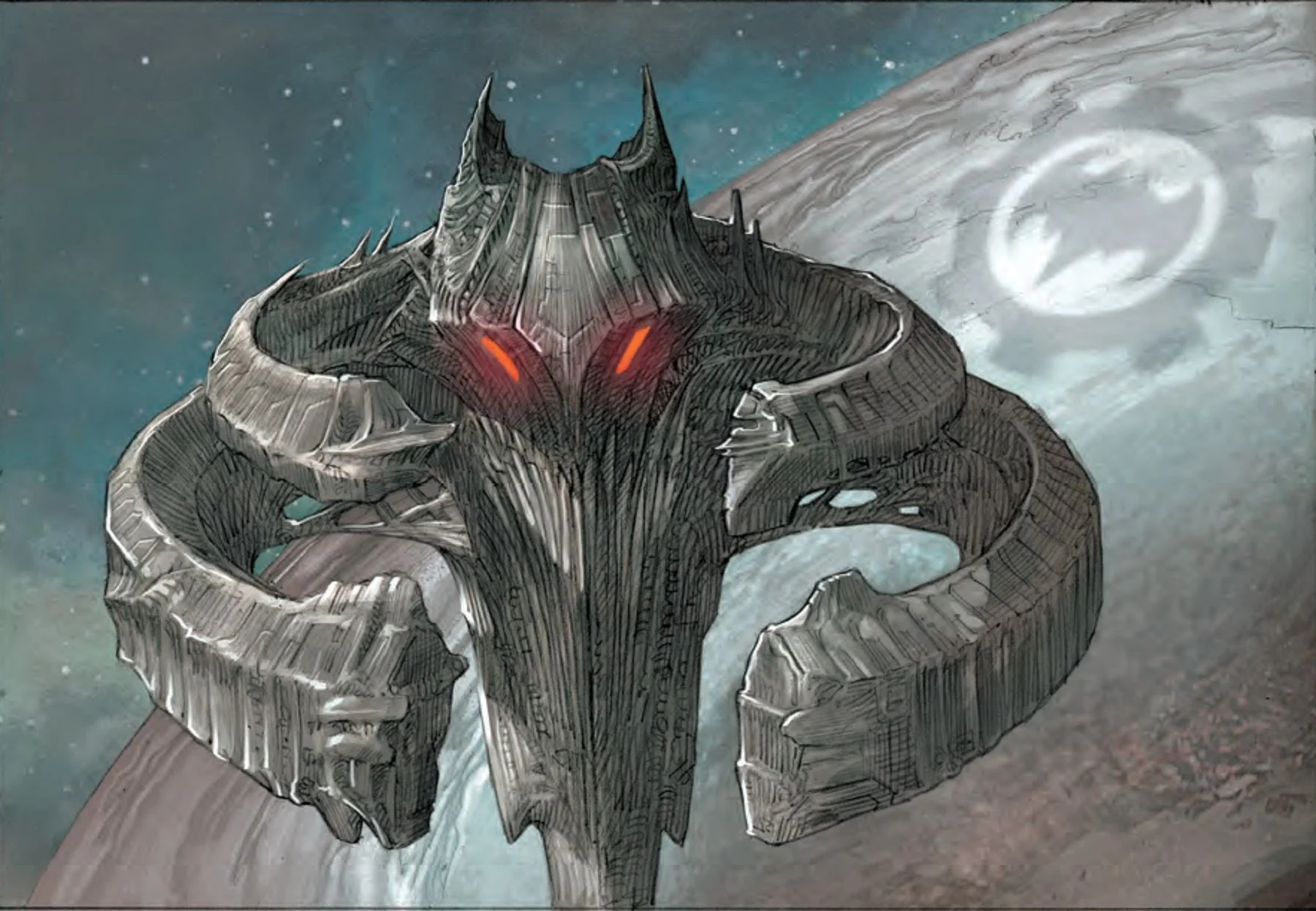
Imagine a Cyborg, unburdened by humanity, with a physical body already at the peak of conditioning and a very itchy trigger finger. Now add to that the fact that he has all the knowledge Bruce Wayne possesses, and you can start to see just why Murder Machine is named what he is. His entire body has been augmented by cybernetic implants down to the cellular level; this already makes him one of the most-dangerous technopaths in the world, even stronger than Cyborg. Murder Machine’s enhancements greatly amplify Bruce Wayne’s already-impressive strength to ungodly levels.
He can tank hits like he’s Blob and dish them out like Superman on steroids; in other words, he’ll stomp a mudhole in you and walk it dry while you wouldn’t be able to lay a finger on him. He can also withstand Mother Box-fuelled energy blasts without a scratch, while his energy projection is powerful enough to break through Green Lantern Ring constructs. Being a technopath allows him to interface with any digital presence in his vicinity; computers, cellphones, cameras, there’s nothing he cannot access or hack into, no matter the encryption level.
Murder Machine can also split himself into multiple drones which gives him functional omnipresence; it’s how he was able to attack Cyborg, Silas, and the city of Detroit all at the same time. His cybernetic cellular structure also makes him a technomorph, allowing him to assimilate pieces of technology into himself as and when he sees fit, while also giving him the power to shape-shift into any form he deems necessary.
And while all this already makes him one of the worst Batman villains ever created, it’s his ecstatic reaction to killing that makes him revolting. Murder Machine doesn’t want to kill you for the sake of it; he relishes the sounds your dying body makes as it crumbles into nothingness before him. He will actively seek out and kill people; a stark opposite to Batman’s moral code. And that is what makes him so damn deadly.
Why Murder Machine deserves more recognition
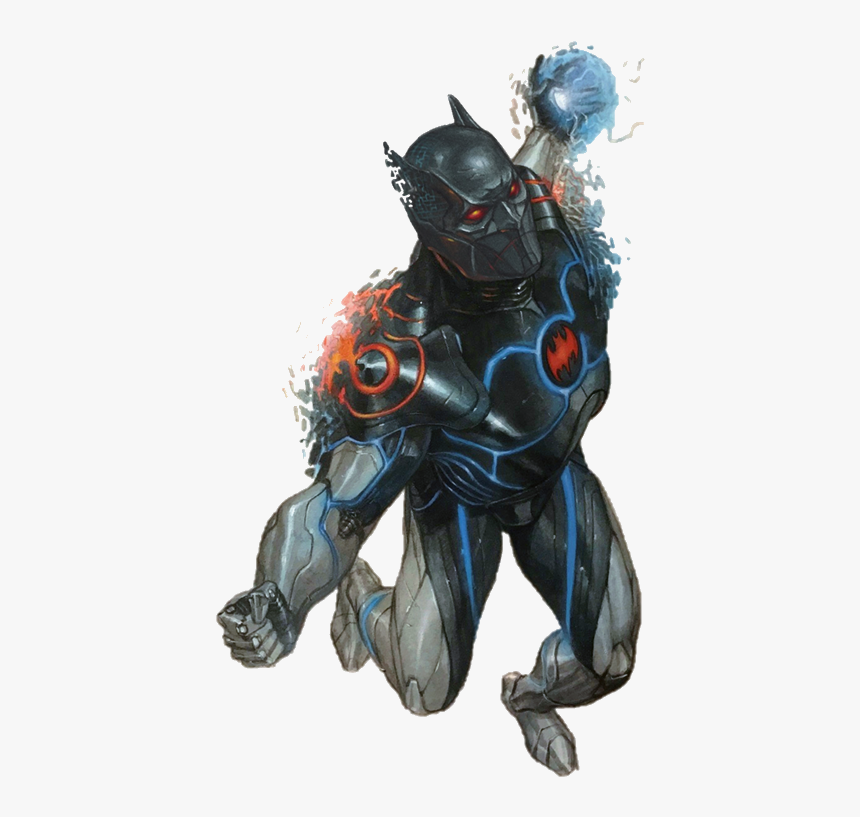
Scott Snyder has managed to make the entire convoluted history of DC’s many re-boots make sense with two simple storylines. Though Murder Machine was only a part of the Metal event, his actions ultimately did impact what transpired between The Darkest Knight and Perpetua.
But more than that, he’s just a cold reminder of what both Batman and Cyborg can become if they lost their humanity. While the Earth-44 version of Bruce Wayne is supposed to be a darker reflection of one of his 7 biggest fears, he serves as a reminder that Victor Stone’s humanity is the only thing keeping Cyborg in control of his body; and not the other way round. At the same time, he also gives us a very real glimpse into how Prime Earth Batman could’ve reacted had Alfred gone out the way he did on Earth-44.
See, Alfred does die during the events of Metal & Death Metal; but instead of going down the Skynet route, Bruce Wayne processes his grief as he should. Murder Machine is a direct mirror image of Batman; if that image was dipped in black paint and left to bake in the sun till the glass cracked. It’s a very realistic glimpse into what could’ve happened to the Main Bruce Wayne during what is definitely the most-important non-crisis Crisis Event in DC history; and we’re just glad that Prime Earth Batman never went down this path. Because if he had, things would be VERY different for DC’s Omniverse.
